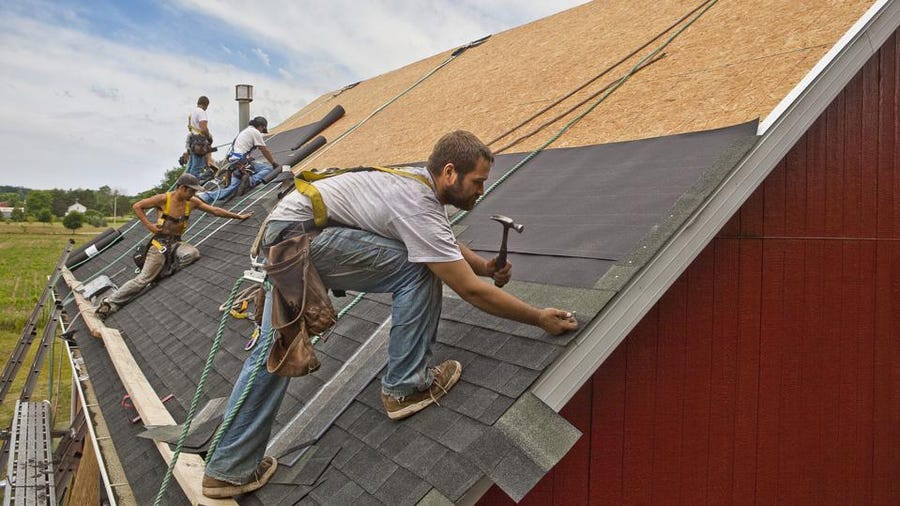As your roof gets older and develops problems, you might wonder whether it is time to have it replaced. However, the chances are that you might be hesitating about it because you are unsure whether you should replace the roof. After all, flat roof replacement involves a key expense. You might not want to spend your hard-earned money on a roof replacement if it is unnecessary, right?
How do you know if it is time to replace your roof?
As a roof gets older, it starts showing signs of aging. Most of these signs are various problems that the roof starts to develop. Knowing what to look out for would help you replace your roof at the right time.
- Check of light enters the attics
Sunlight streaking into the attic is a sign of a damaged roof. The reason is, if sunlight can make it in, so can rain, cold air, and snow. Now, if the leak is a small one, you can get it patched up. A big leak, on the other hand, would need a roof replacement at the soonest.
- Watch out for sagging roofs
- Sagging roof
s happens= to be one of the worst stages of a damaged roof. A sagging room can potentially put the lives of the residents in imminent danger. Usually, it indicates significant structural damage and requires an immediate replacement.
- Check for cracked shingle
The condition of the shingles is a prime indicator. When the roof is alright, the shingles should lie flat against it. However, damages to the roof might cause the shingles to crack or buckle. These signs especially tend to appear after heavy rainfall and storms.
- Look for shingle granule
It is normal to find shingle granules in the gutter right after you have installed them. However, if the shingles have been there for a few years and you start discovering granules, it means that the singles are disintegrating. Depending on the number of shingle granules you find, you may choose to replace the roof.
- Check whether or not the shingles are curling
Weathering and leaks can cause the shingles to curl. Upward curling is known as cupping, while clawing refers to downward curling. Both the conditions indicate that you need to have the roof replaced. You may have anything between a year to five years to replace the roof before it is unavoidable.
- Consider the age of the roof
Every roof has a lifespan. Apart from the signs of damages, the age of the roof helps to get an idea of whether you need a replacement, too. Try to check home improvement records to see when the last roof installation or replacement took place. Look for information on the usual life expectancy of the roof type and calculate how much longer it is likely to last.
- Too many missing shingles
One of the key reasons behind the popularity of shingle roofing is that missing shingles are easy to replace. However, it may be hard to find shingles of the same design as the original ones. Too many shingles of a different shape can ruin the aesthetic appeal of the roof. In this case, replacing the roof would be a better choice.
How long does a roof usually last?
The expected lifespan of a roof usually depends on its material. Different types of roofs last for different periods.
- Metal Roofs: 50-75 years
- Composite Shingles: 12-20 years
- Rubber Roofs: 30-50 years
- Wood Shingles: 20-25 years
- Asphalt Shingles: 15-30 years
Factors like weather elements have an impact on the lifespan too. A reputed roofer should be able to provide you with a suitable roof replacement solution.
Related posts

Recent Posts
- The Future of Rummy: Trends and Predictions April 16, 2024
- 6 Questions to Ask Your Hardwood Flooring Installer March 28, 2024
- Inside Rinat Akhmetov Foundation’s Blogger Camp for Ukraine’s Young War Survivors February 29, 2024
- Driving Success: Exploring the Benefits of Golf Simulators for Businesses February 23, 2024
- UNLOCKING EFFICIENCY: YOUR GUIDE TO INDUSTRIAL EQUIPMENT MAINTENANCE November 8, 2023
- SELECTING THE RIGHT PUMP MATERIAL: FINDING THE PERFECT FIT FOR YOUR APPLICATION October 27, 2023
- Combining Fundamental and Technical Analysis on TradingView August 26, 2023



Stay connected